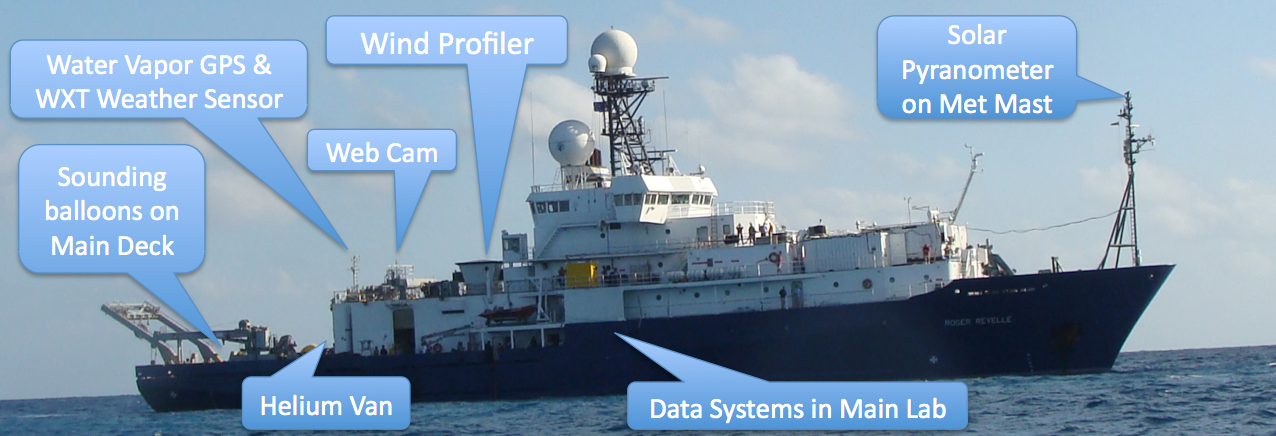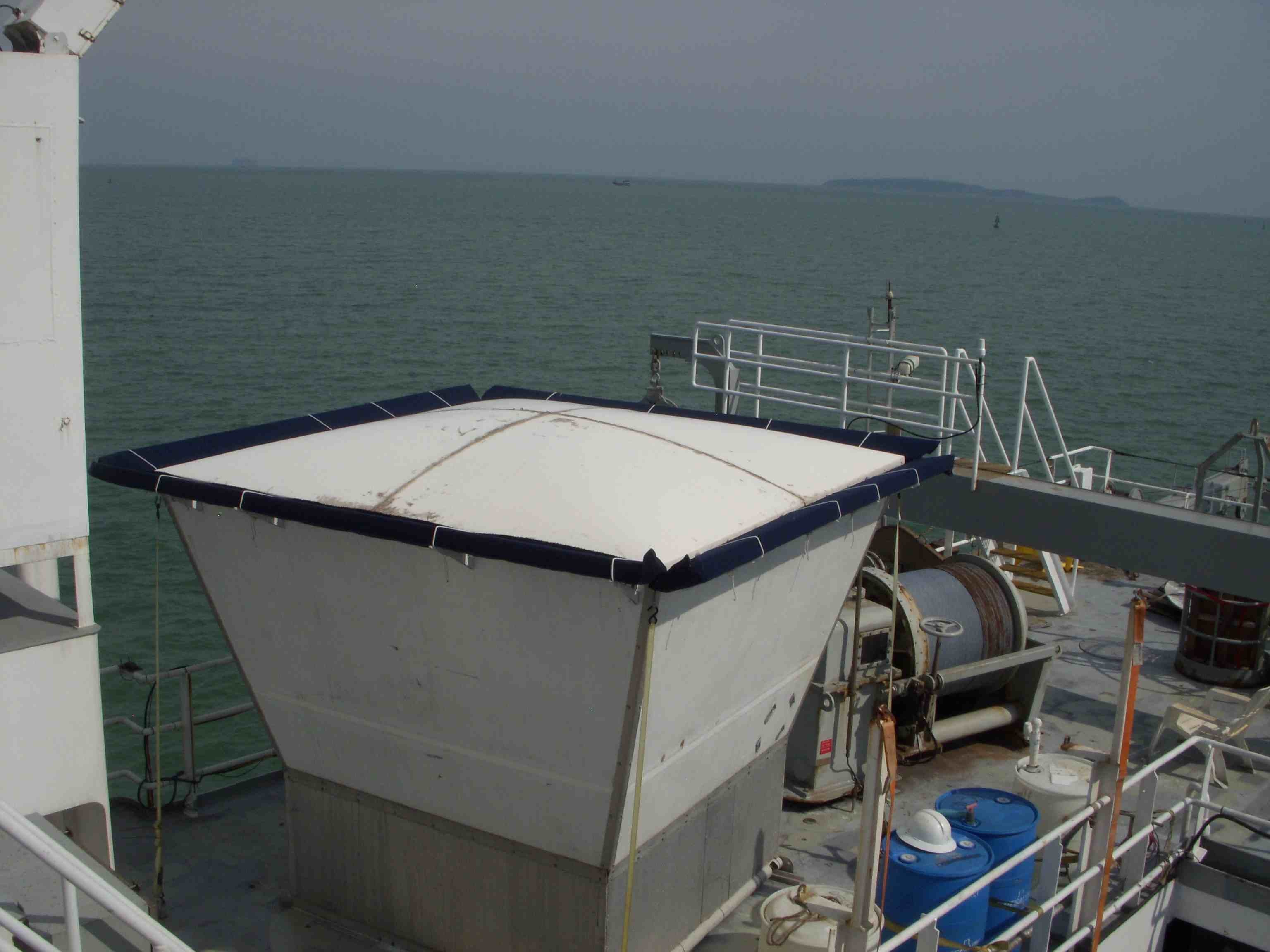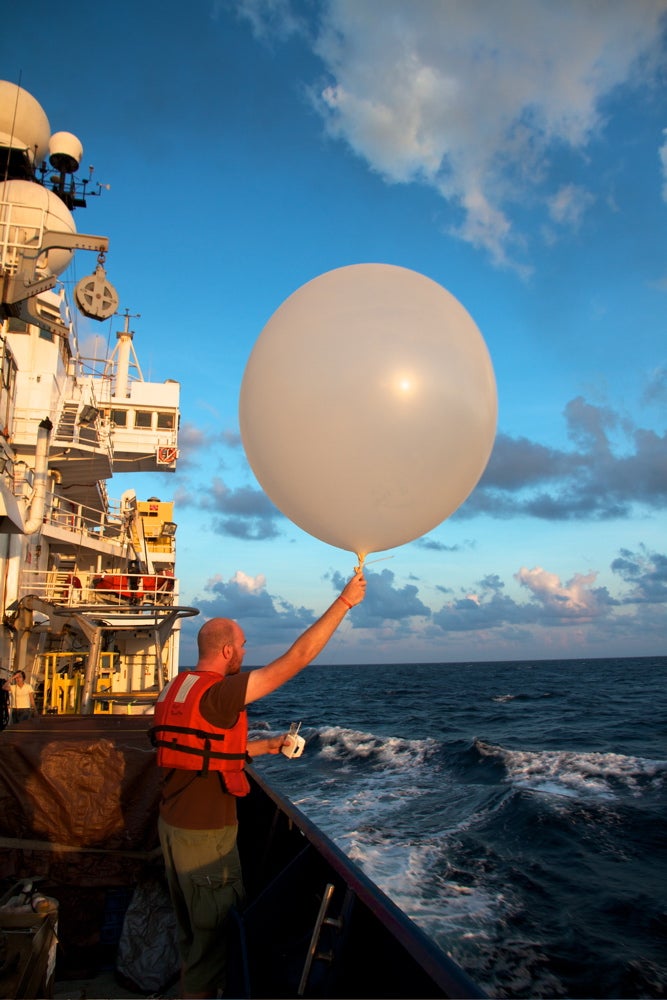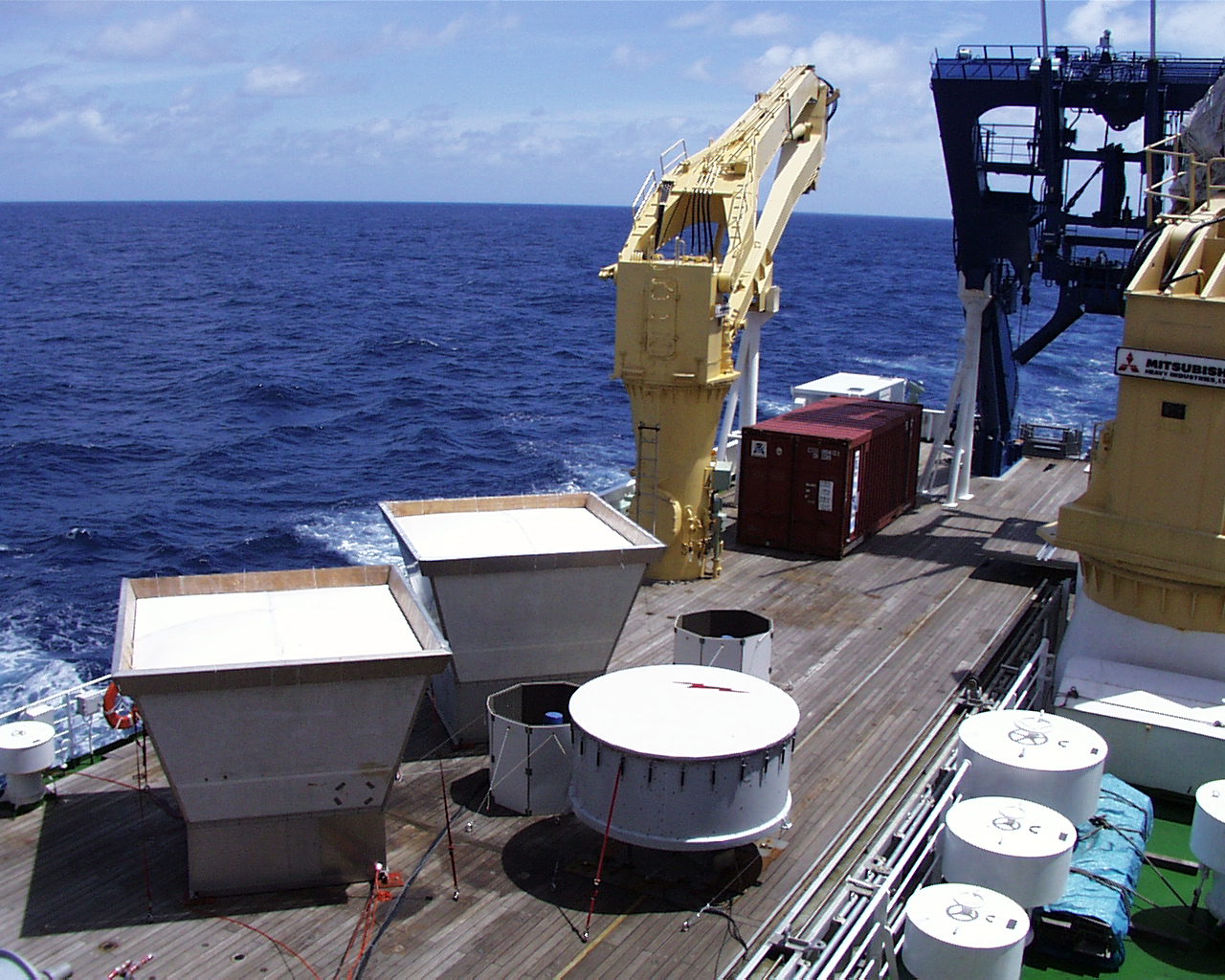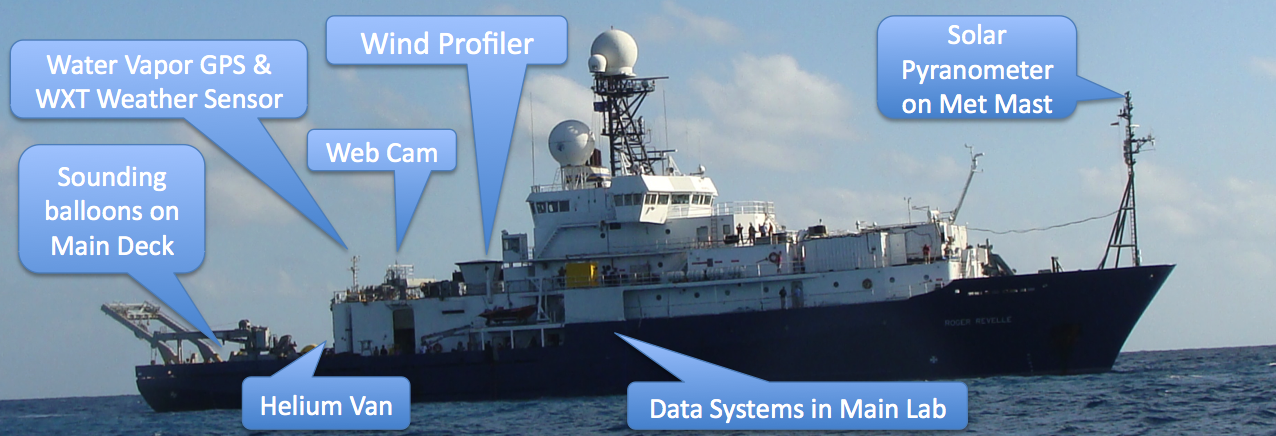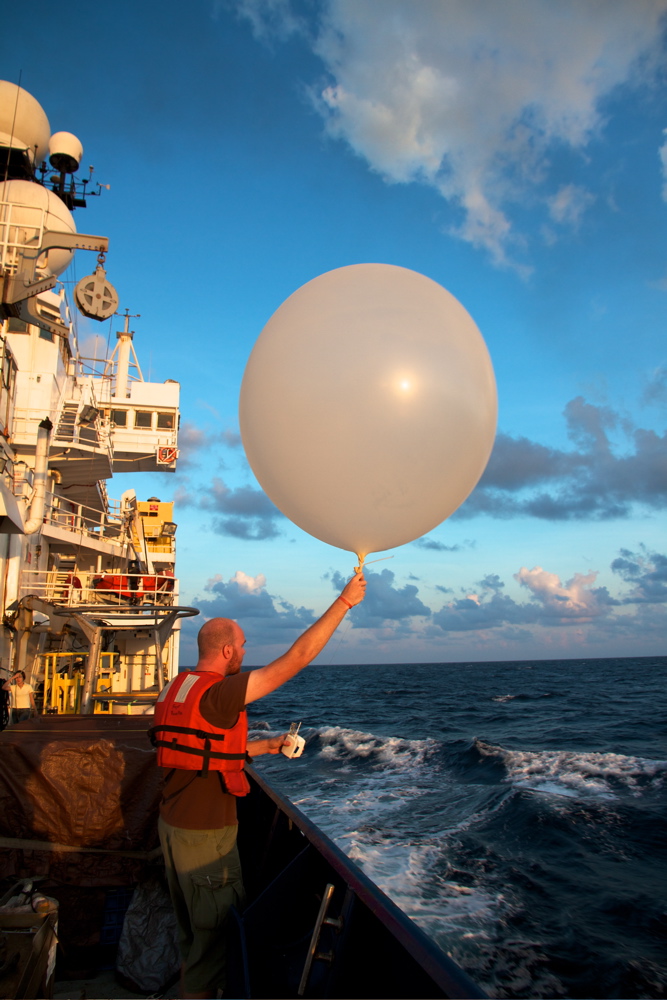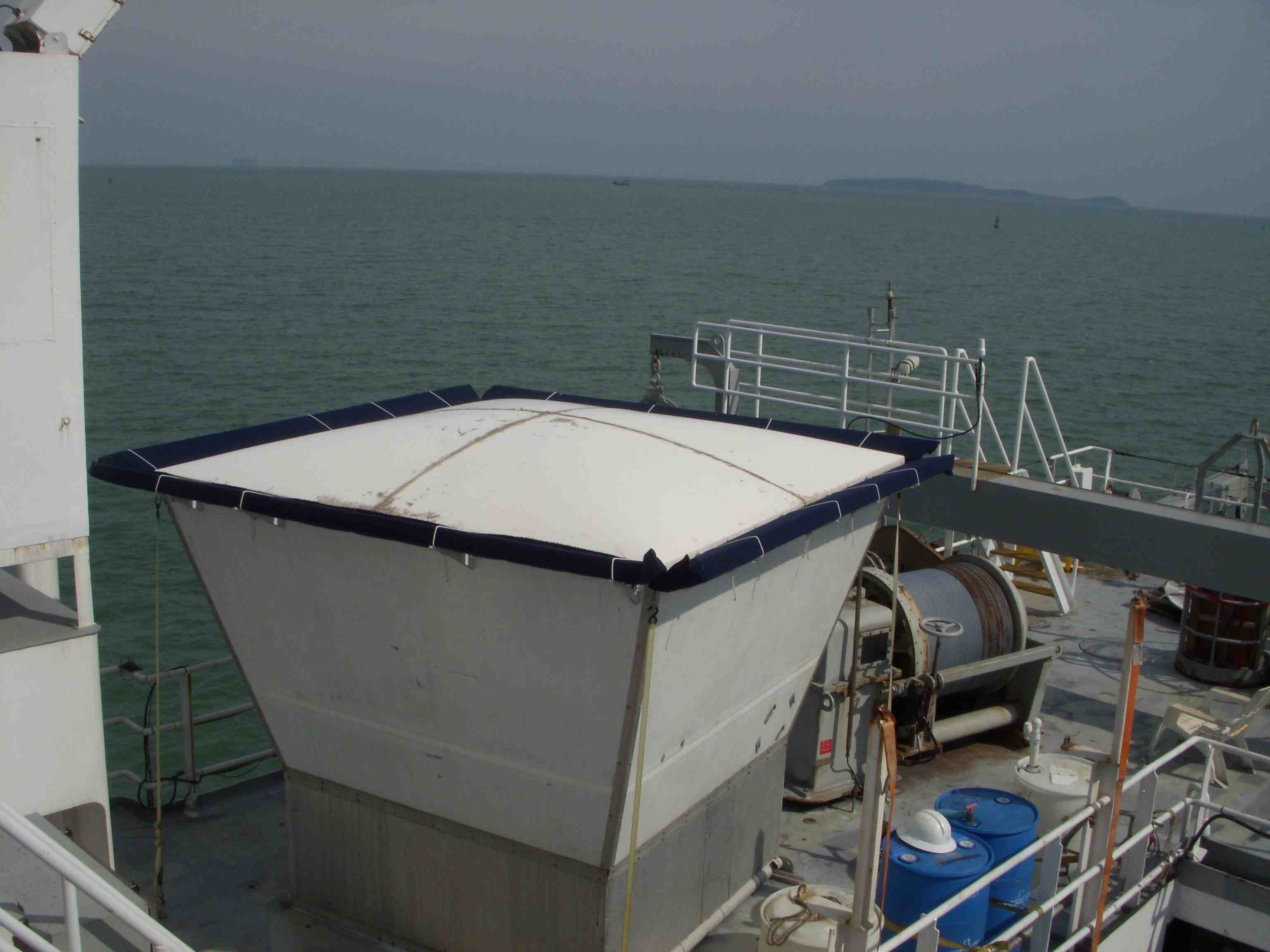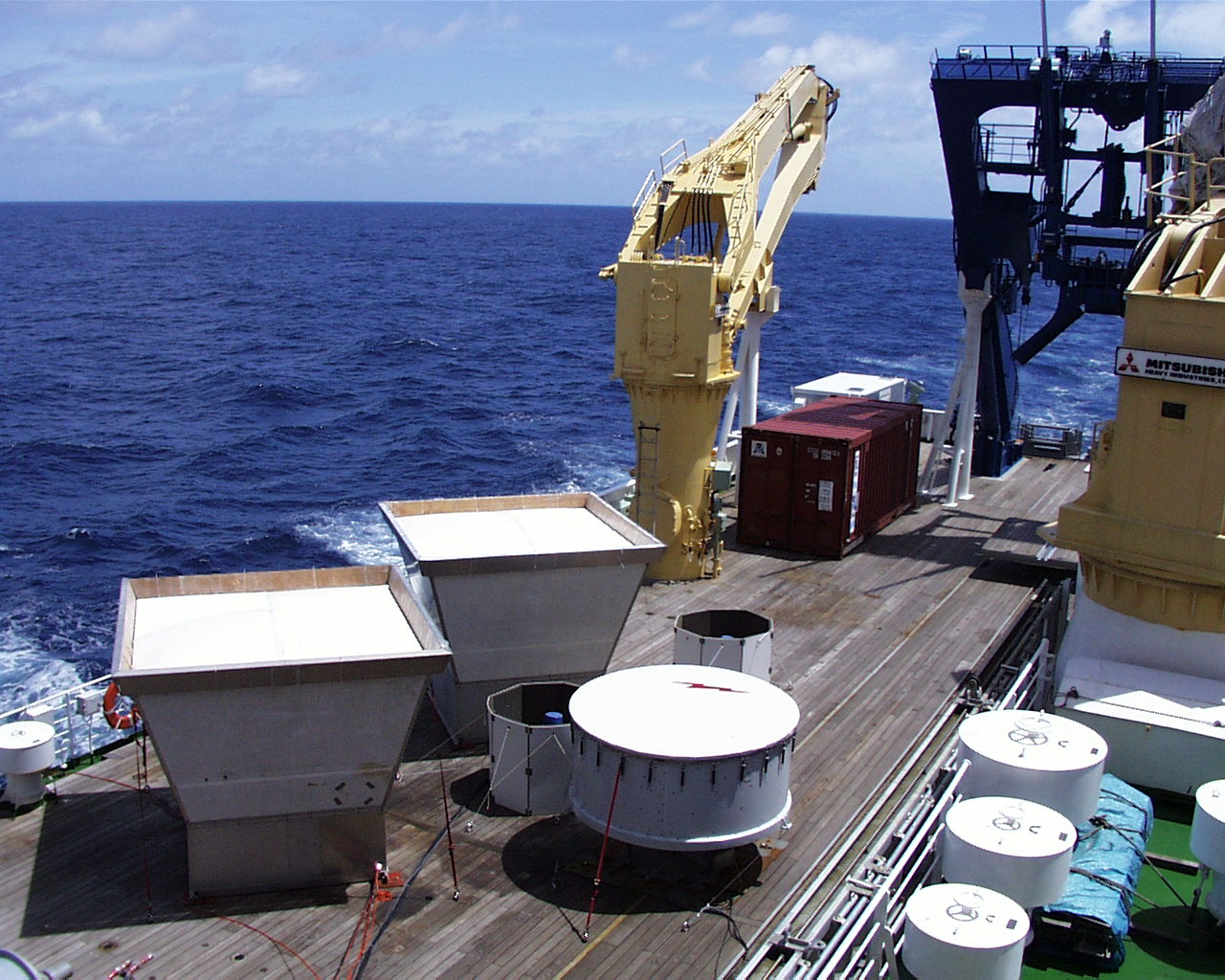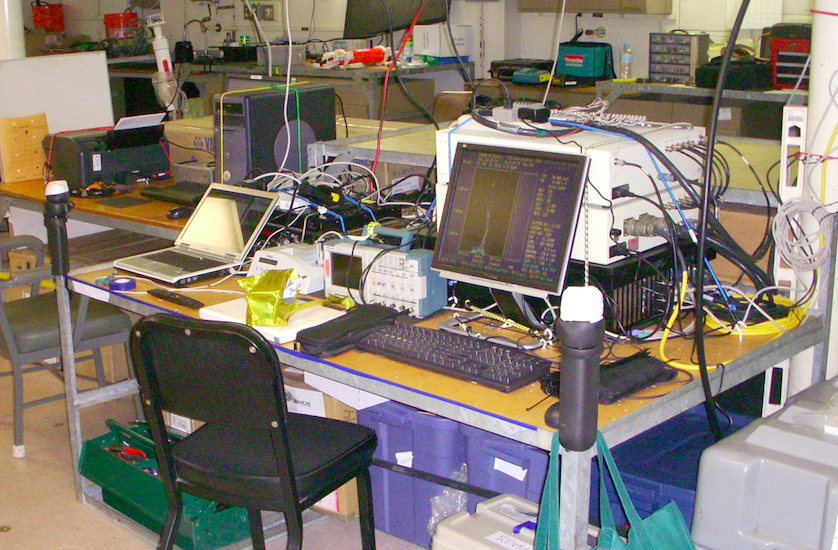The Integrated Sounding System (ISS) can be deployed aboard research ships for experiments such as ocean-atmospheric studies. Usually the ISS consists of a radar wind profiler, surface meteorology sensors, and a radiosonde sounding system (formerly the GAUS system). A scanning wind lidar can also be deployed. The ISS has been deployed on US, Australian, Japanese, French, Chinese, and Peruvian research vessels in conditions ranging from the calm tropics to the winter-time North Atlantic as well as the Southern Ocean. The wind profiler is operated on a gyroscopically stabilized platform to reduce the effect of rolling. GPS and a compass are used to correct for ships motion.
The above pictures show the ISS deployed on the Scripps R/V Revelle in the Indian Ocean for the DYNAMO project in 2011 & 2012. Below are pictures are on board the Woods Hole Oceangraphic Institute (WHOI) RV Knorr in the North Atlantic for the CLIMODE campaign in 2007.
Radiosonde sounding being launched from the hanger on the Knorr. The gas bottles contain Helium for the balloons.
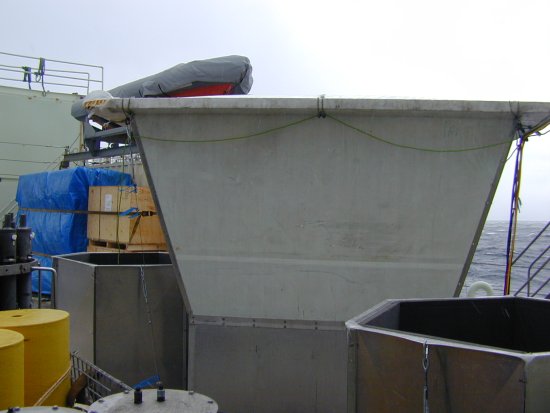
Wind profiler and RASS
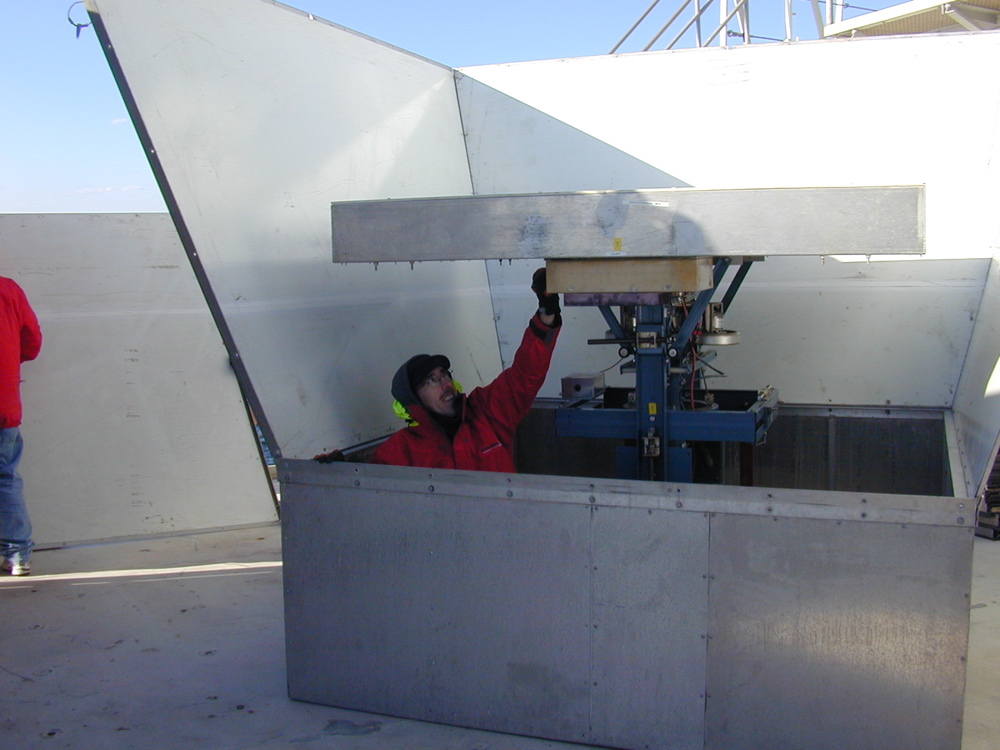
The wind profiler antenna on the gyroscopically stabilized platform inside the clutter screen.
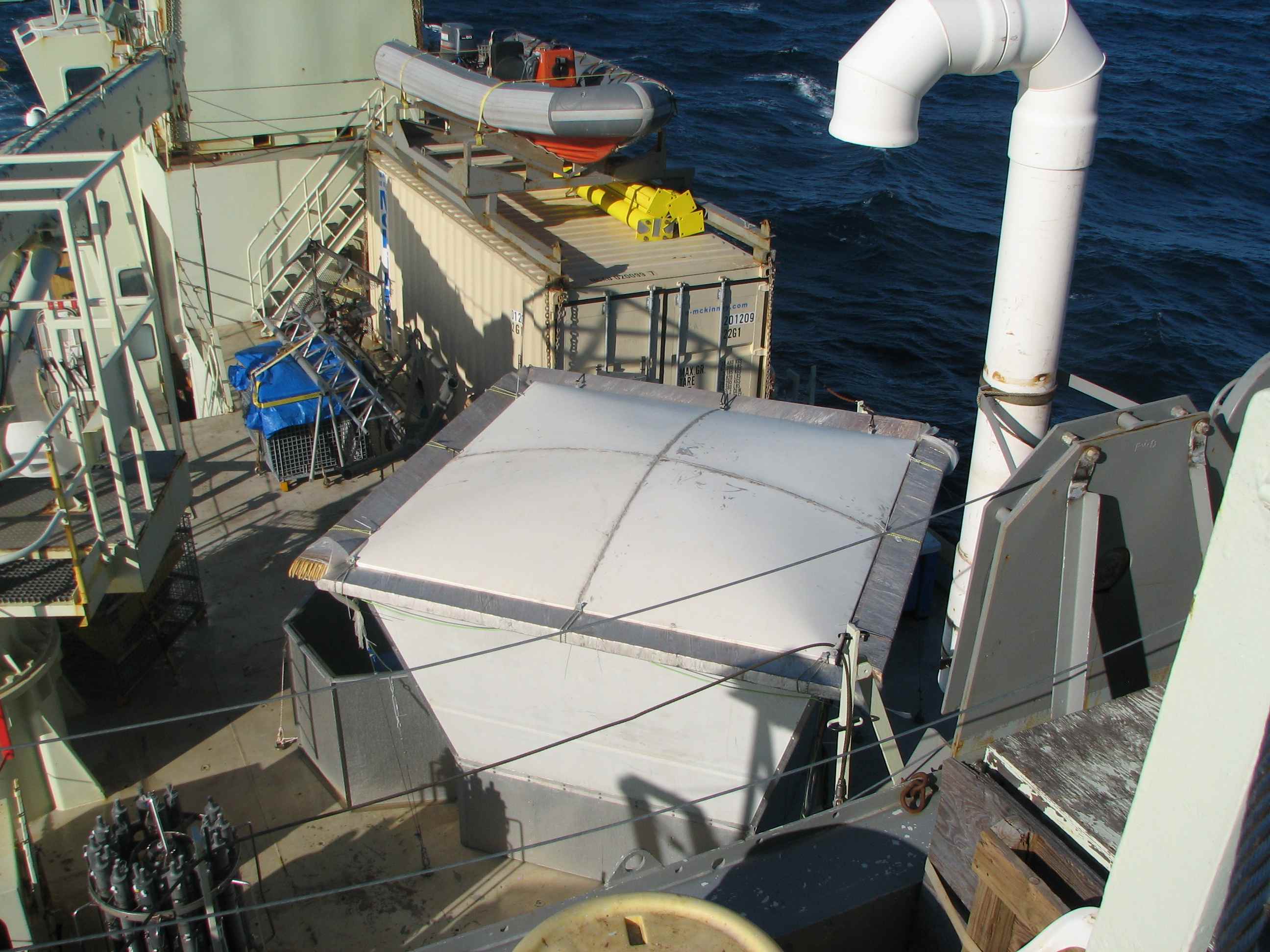
View down on the profiler.
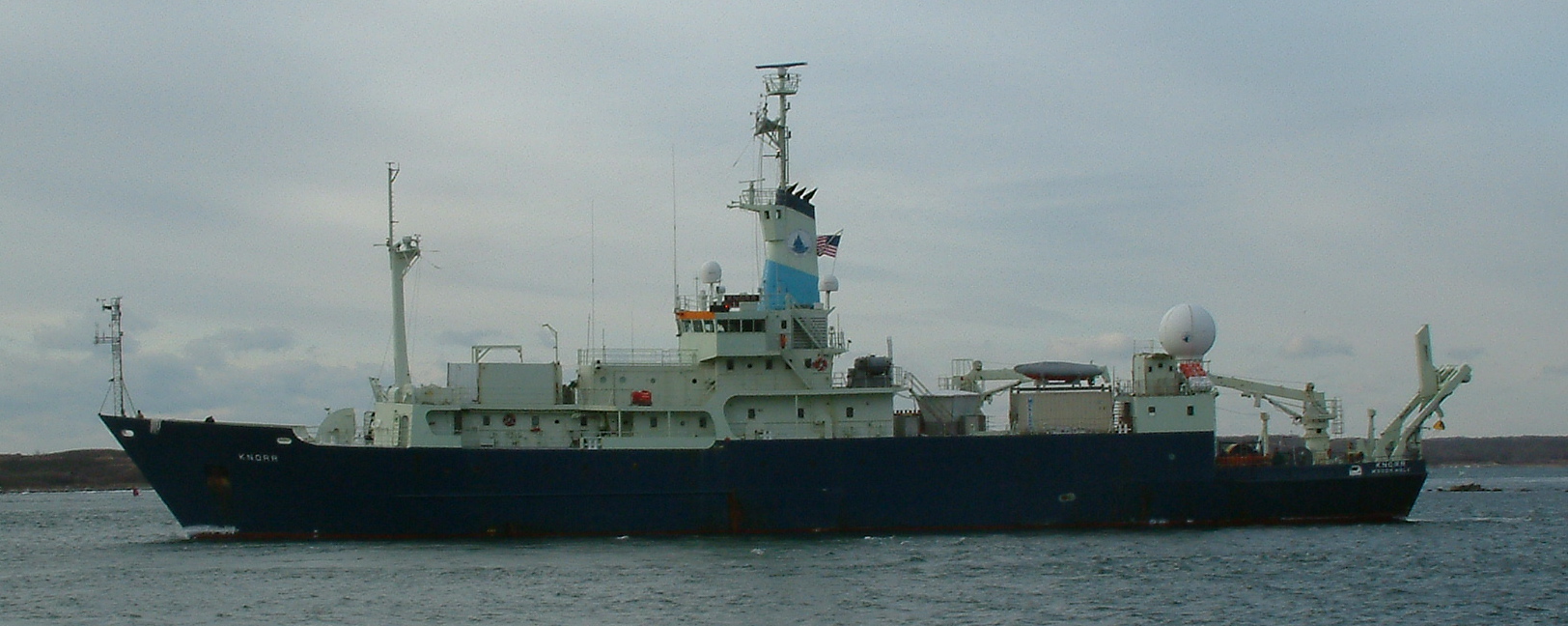
The profiler is located about the middle of the ship (just aft of the funnel and forward of the life-raft in this photo).
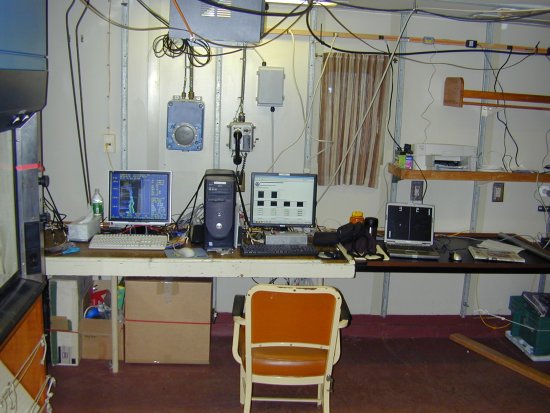
ISS computers in the ships lab.
Two wind profilers deployed on the Japan JAMSTEC RV Mirai for the Nauru99 campaign in the central Pacific.
The ISS are operated by the Atmospheric Profiling Group at the National Center for Atmospheric Research (NCAR) Earth Observing Lab (EOL).
